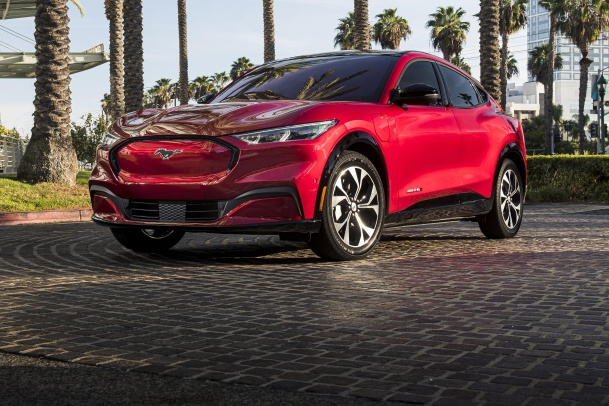The day before it files its financial statements for the first quarter of the year, the American automaker Ford announced last week its second price cut of 2023 for its Mustang Mach-E electric crossover. This is a pricing strategy that goes against the market to boost sales as dealers can place orders again.
All Premium trim levels, whether or not they have all-wheel drive or a long-range battery, see their prices drop by between $3,000 and $11,000, depending on the configuration chosen. The most expensive versions — California Route 1 and GT Performance Edition — will retail for $69,995 and $82,995, respectively, which is discounts of more than $9,000 either way.
This price adjustment is also accompanied by the introduction of a new lithium-iron phosphate battery, the arrival of which was announced in February. This will be offered on board the “standard” autonomy models (72 kWh) and will slightly increase the autonomy of the rear-wheel drive version to 402 km and to 364 km for the all-wheel drive version. The latter will also benefit from an additional 45 hp in the transition to increase the count to 311 hp thanks to its two engines.
Ford specifies that this new battery can be charged to 100% more often and will take 5 minutes less to go from 10% to 80% on a fast charging station. It is used by Ford in order to reduce its dependence on nickel and cobalt and thus increase its production capacity of electric models. On the other hand, it is less efficient in cold weather.
Following this announcement, the big boss of Ford, Jim Farley, declared in an interview with the wall street journal that price cuts in the electric car sector “were a worrying trend”, referring to the strategy of its competitor Tesla. “The resale value for people who bought at higher prices is terrible,” said Farley, noting that there is a “limit” that the manufacturer will not exceed in this price war between the Mustang Mach -E and the Tesla Model Y.

